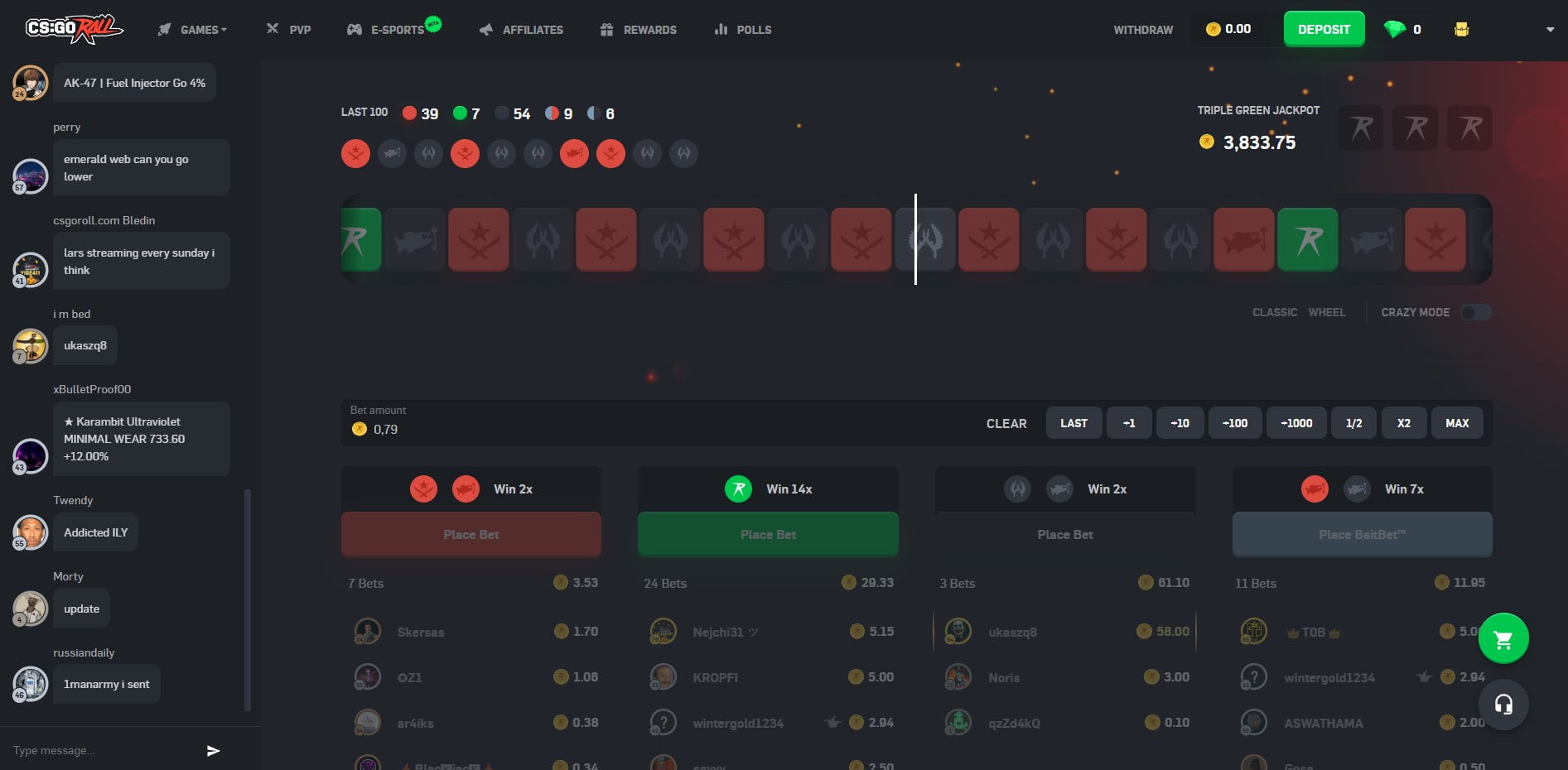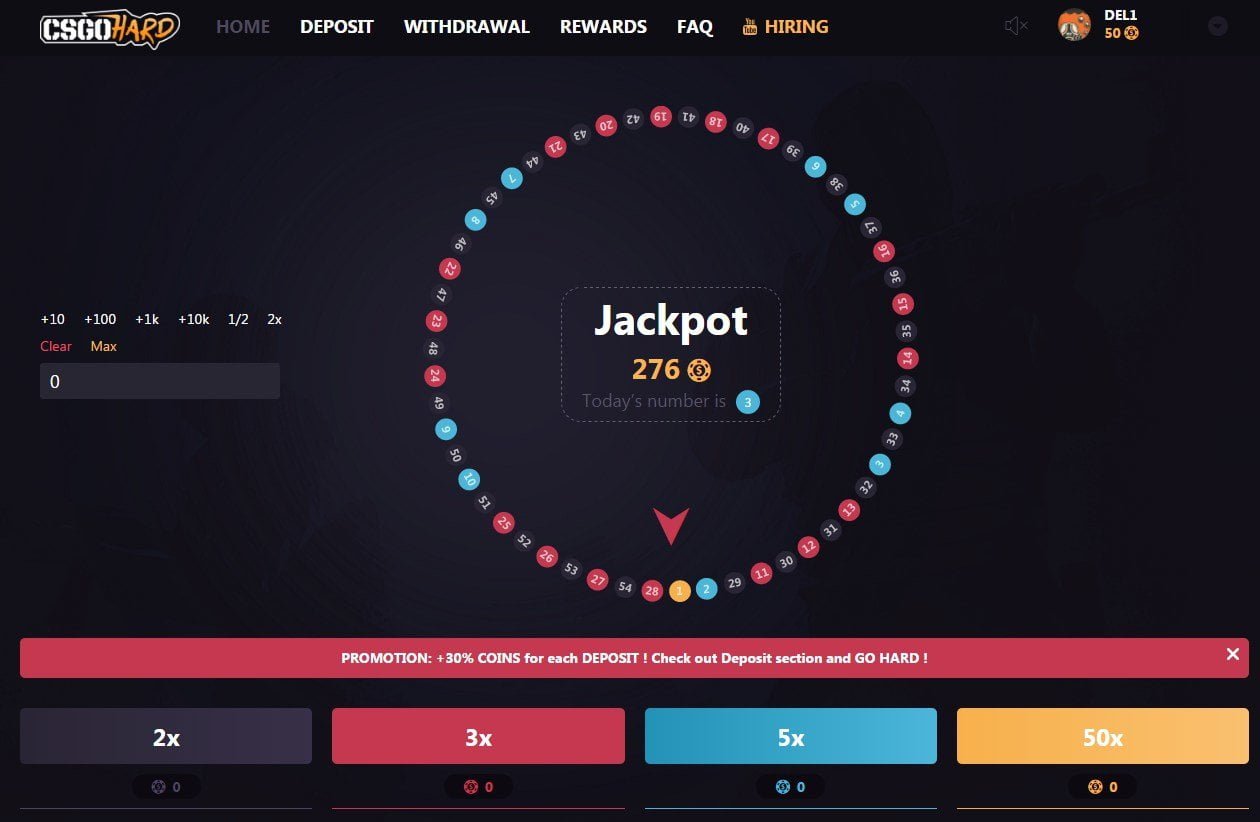
CS2 Roulette Martingale Strategy: A Complete, No Nonsense Guide
🎰 Martingale is simple, seductive, and dangerous. Double after a loss, grab one win, recover everything plus your first stake.
Here is how it really behaves on CS2 roulette, why the edge still beats you, and how to run strict controls so you do not torch your bankroll.
What Martingale Actually Is
Martingale is a negative progression system. You bet a base unit on an even style outcome, lose, then double until a win. One win resets the sequence and books profit equal to your original stake. In CS2 roulette this is typically red or black with a 2x style payout. Greens exist and they break the clean 50 percent assumption, which is where the house edge lives.
Key truth: progression does not change probabilities. It only changes bet size and the speed at which you hit your table limit or your own stop loss.
CS2 Roulette Specifics You Cannot Ignore
Trains are long streaks of the same color. They happen. Hash based provably fair systems can still output 8, 10, 12 identical results in a row. Your doubling ladder must survive that or you go broke.
House edge comes from green. If red and black each carry roughly 47 to 48 percent and green fills the gap, your real win chance per spin is below 50 percent. Martingale does not erase that edge.
Provably fair means you can verify the seed and outcome after the spin. Always click verify. If a site hides this, leave.
Bankroll Math in One Minute
If your base bet is B and you plan to survive N consecutive losses, the total bankroll required for the sequence is B × (2^N − 1). Example with B = 5 and N = 8: 5 × (256 − 1) = 5 × 255 = 1275. That is just to survive the sequence. It does not include table limits or your nerves.
Most busts happen because players underestimate N. A 9 or 10 loss train is not rare over long sessions. Build for the pain, not the fantasy.
How Martingale Plays Out on CS2 Roulette
Start with a small unit on red or black. Lose, double, repeat. When you finally win, you capture profit equal to the original unit, then reset to base. The sequence is easy to execute and psychologically satisfying. The risk is exponential growth while you wait for that single win.
Train aware tip: if a color has run 7 to 10 times, that is information about your ladder survival, not about what must happen next. Streaks do not have memory. Do not chase because it feels due.

Example Sequences You Should Simulate
Assume a losing streak and see how fast stakes explode:
- Base 1: 1 – 2 – 4 – 8 – 16 – 32 – 64 – 128 – 256 – 512
- Base 5: 5 – 10 – 20 – 40 – 80 – 160 – 320 – 640 – 1280 – 2560
- Base 7: 7 – 14 – 28 – 56 – 112 – 224 – 448 – 896 – 1792 – 3584
Bankroll required rises faster than your comfort level. If you have not pre set a hard stop at a specific step count, the system will drag you past reason.
Risk Controls That Keep You In The Game
1. Cap the ladder: choose a maximum of 6 to 8 steps. If the ladder fails, accept the loss and reset next session. Unlimited doubling is a myth on capped tables and finite balances.
2. Use a tiny base: set base at 0.25 to 1 percent of your total balance. If your base is too big, you will hit the table cap by step 7 or 8.
3. Session stop wins and stop losses: example rules that actually work in practice: stop win at +3 to +5 base units, stop loss at −8 to −10 base units, hard time limit 20 to 30 minutes, no immediate re entry after a bust.
4. Verify every result: use provably fair. If the site fails verification or delays withdrawals, withdraw everything and do not return.
Alternatives When You Want Lower Stress
Flat betting: same stake every spin, slow variance, house edge still applies but you never face exponential blow ups.
Anti Martingale, also called Paroli: press only after wins, cap at 2 or 3 steps, then drop to base. You ride heaters and protect the downside.
Fibonacci: climb using the sequence after losses, step back two on a win. Growth is slower than pure doubling, risk profile is gentler.
Responsible Play Comes First
Set limits, use cooldowns, and withdraw wins. Gambling is entertainment, not income. If you feel urgency, tilt, or the need to chase, stop for the day. Control is the only real edge.
Bottom Line
Martingale is a clean mechanism with ugly failure modes. It can print small wins in quiet sessions, then erase a week in one train. Use strict bankroll math, short ladders, and hard exits. If that sounds boring, good. Boring keeps balances alive.
| Topic | Details |
|---|---|
| Strategy Overview | Martingale is a negative progression system that doubles after each loss until a win occurs. One win covers all prior losses plus the base stake. |
| Application in CS2 Roulette | Used on red or black style 2x outcomes. Greens reduce true win chance below 50 percent, which creates the house edge. |
| Risk Factor: Train | A train is a long run of one color. Hash based randomness can produce 8 to 12 in a row. Ladders must be built to survive or you bust. |
| Bankroll Formula | Total needed to survive N losses with base B equals B × (2^N − 1). Underestimate N and the system will fail exactly when it hurts most. |
| Verifying Authenticity | Use provably fair to check seeds and outcomes. Avoid any site that hides verification or delays withdrawals. |
| Controls That Matter | Cap steps, tiny base size, clear stop win and stop loss, time boxed sessions, no immediate re entry after busts. |
| Strategy Evaluation | Simple, fast, and appealing. High blow up risk on streaks. Works only with discipline and small goals. Luck still dominates outcomes. |








